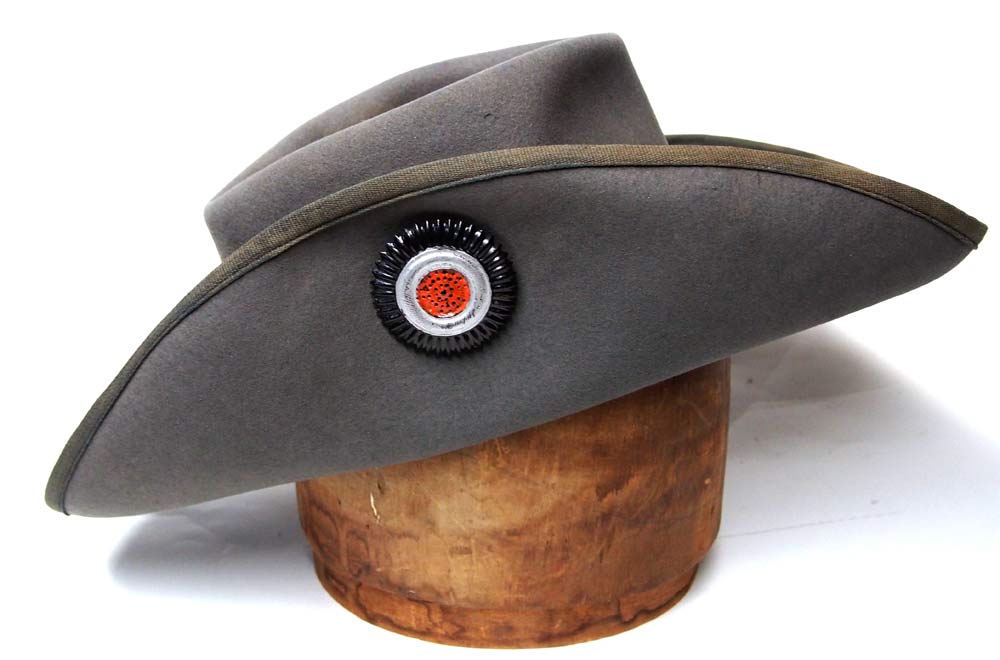
While the sun/pith helmet remains the iconic headdress of the colonial empires established by the European powers in the second half of the 19th century it wasn’t the only headgear favored by those colonial forces. Indigenous colonial forces utilized a variety of headdress of course, while slouch hats were increasingly favored by various units beginning in the 1880s. One of the more notable variations was the German slouch hat, which largely used in German South West Africa.
Imperial Germany’s colonial empire was not as vast as that of its British or French rivals, and it was also rather short-lived – existing only from 1882 until the First World War when the colonies in Africa, Asia and the Pacific were quickly overrun. However, it should be remembered that within a decade of German unification the nation quickly established colonies and created a special protection force to oversee the administration and control of these territories.
The Schutztruppe was the official name of the colonial troops in the African territories of the German colonial empire, and this designation dates back to the parlance of Chancellor Otto von Bismarck, who sought to use the term Schutzgebiete, “protectorates”, instead of colonies. Schutztruppe contingents arose from local police forces or private paramilitary units, where German colonizers met with stronger resistance.
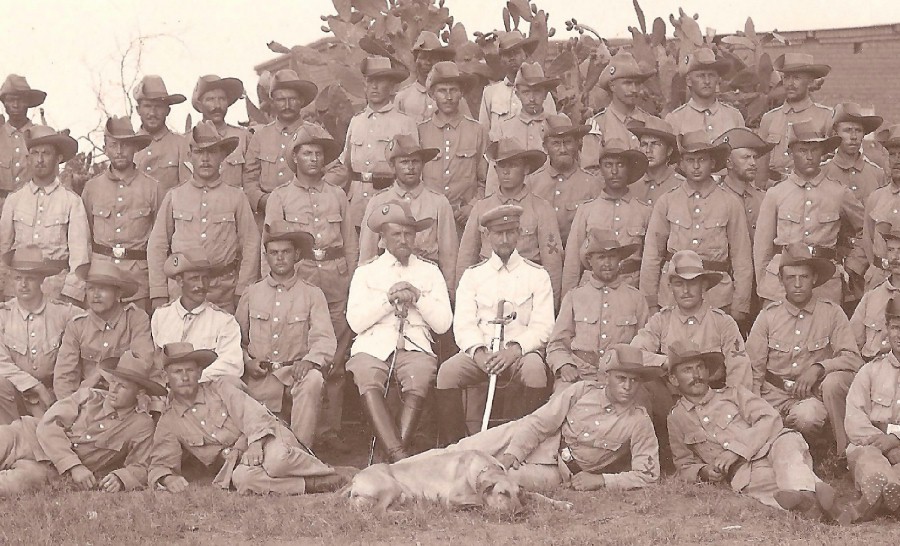
A photograph of the Mountain Gun Battery of the South West African Schutztruppe taken in Okahandja in 1903. The first Schutztruppe for Deutsch-Südwestafrika (German South West Africa) was established on May 1, 1889, and it was charged to provide armed protection for the colony (protectorate) against hostile forces, both internal and external. Note that the two officers (Joachim von Heydebreck on the left and Freiherr von Hirschberg on the right) both wear white tunics ten years before they were authorized (Photo: German Colonial Uniforms: http://www.germancolonialuniforms.co.uk/)
Initially the Schutztruppe wore white sun helmets with a variety of fittings including front plates and chinchains. However, these were purely a parade dress item as the mild climate of coastal South West Africa made the sun helmets unnecessary compared with other parts of the German colonial empire. After 1894 the sun helmets were no longer issued, and instead a field gray hair-felt kepi-style cap was issued to the junior officers, NCOs and ranks. Today it is hard not to see a resemblance to the Confederate forces of the American Civil War given the gray uniforms and kepis!
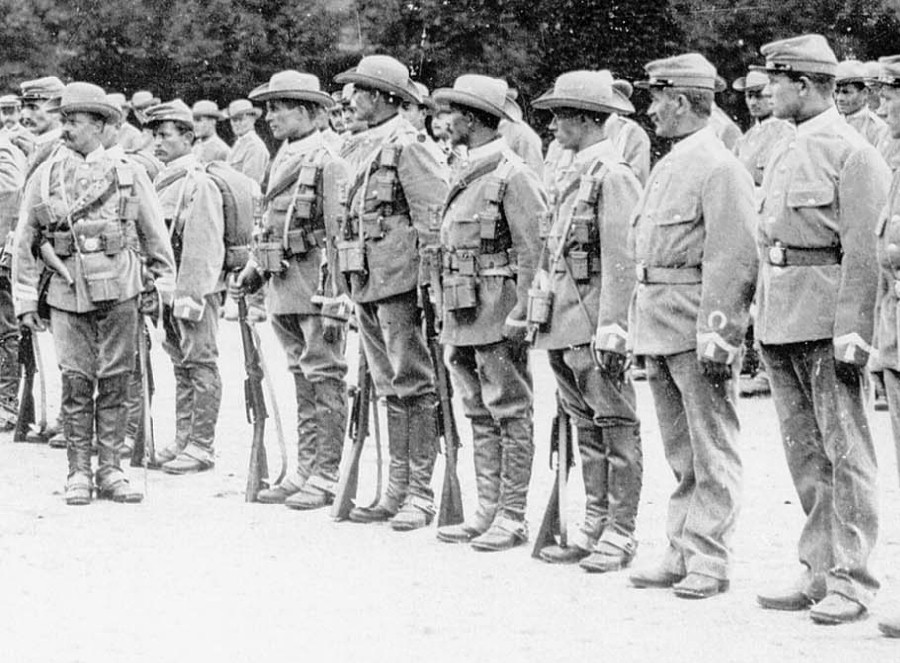
This photo shows NCOs of the South West African Schutztruppe, Potsdam 1894. Note the mix of slouch hats and kepis. The two soldiers to the far right of the photo could possible be mistaken for soldiers in the American Civil War. (Photo: German Colonial Uniforms http://www.germancolonialuniforms.co.uk/)
In 1900 a new Home Uniform for all German Protectorates in Africa was introduced, and while it was to be worn – as the name suggests – by units on home duties in Germany, it was also worn on almost all occasions in the protectorates. This included a gray felt hat “slouch hat” that was held up on the right side by a large metal imperial cockade featuring the colors black/white/red. The hatband ribbon and edging noted the colony/area of operations and in the case of German South West Africa was a blue/gray color.
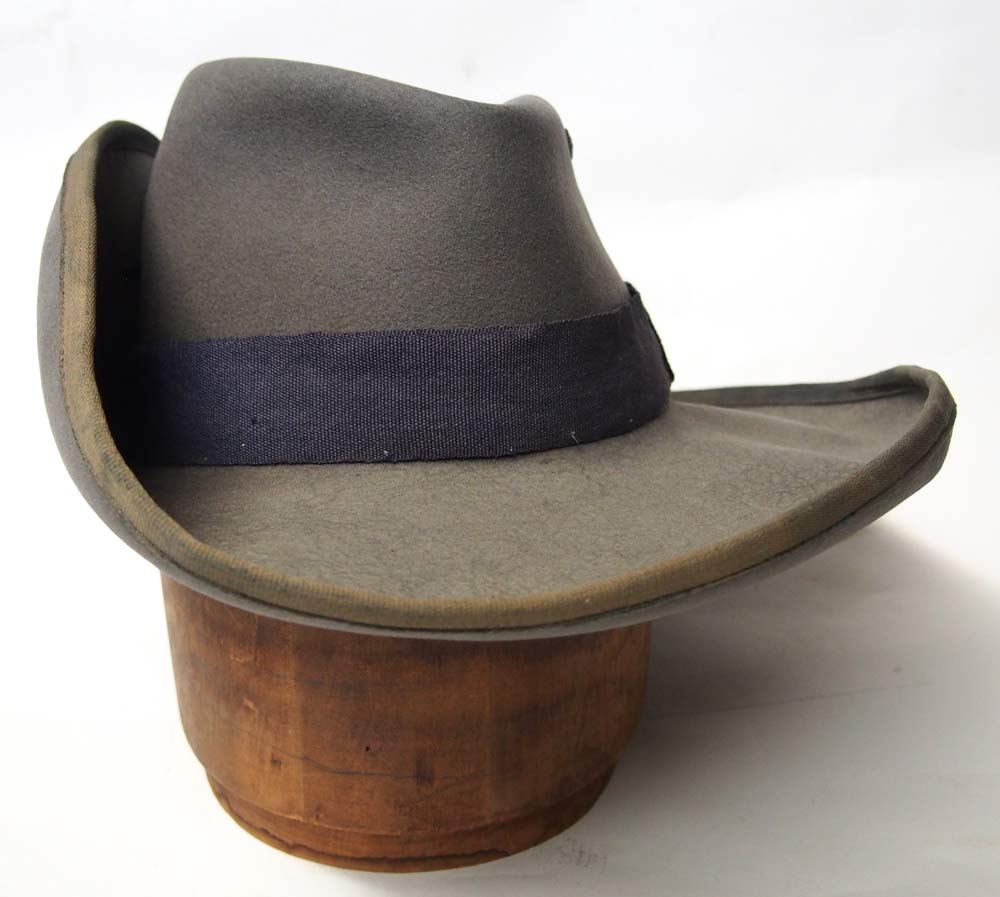
The front view of the hat shows the blue/gray band for German South West Africa (Collection of the author)
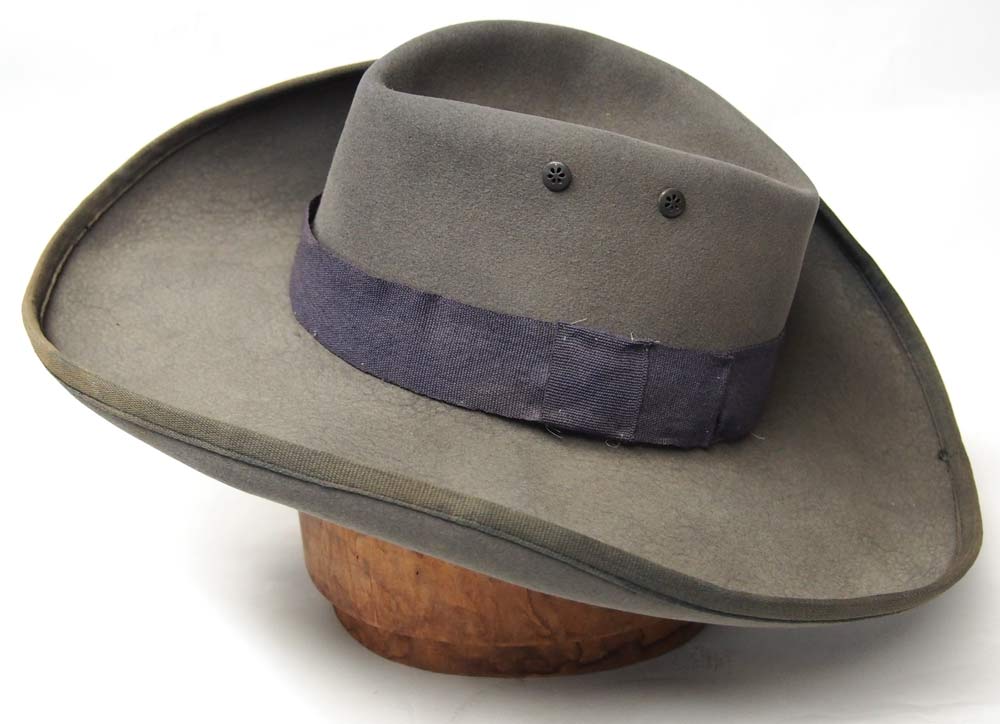
A view of the left side of the hat, showing the location of the two ventilation grommets. Note the trim of the hat has faded due to sun and age – but this would have also been blue/gray like the hat band (Collection of the author)
Officers and seniors NCOs hats were often privately tailored and therefore of a better quality. The hat was worn in all colonies and it should be noted that General Paul Emil von Lettow-Vorbeck, who commanded the German forces in German East Africa during World War I, wore the German slouch hat.
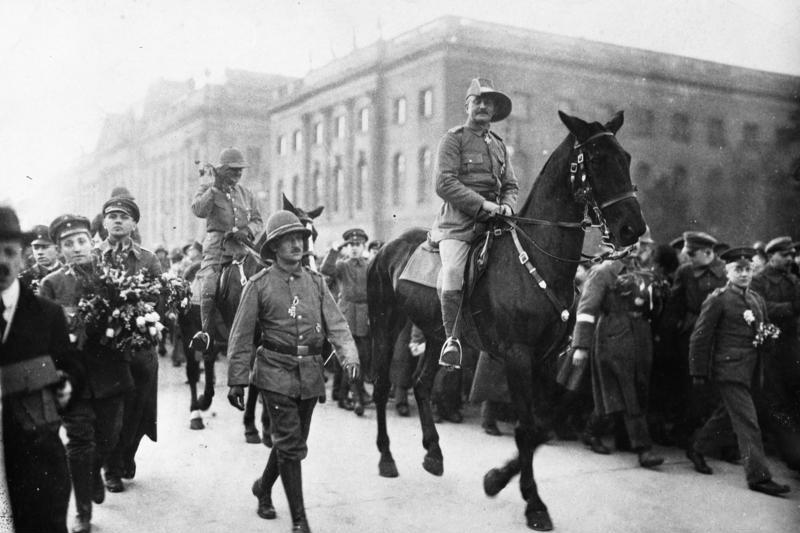
General Paul Lettow-Vorbeck — “the Lion of Africa” — at a parade in Berlin in 1919. Lettow-Vorbeck was undefeated in war, and only surrendered to British forces on November 25, two weeks after the armistice took affect.
These hats were later worn by colonial veterans groups, and over the years many of those hats – made post-war – have been passed off as actual colonial-used ones. However, it should be noted that only those with the ventilation grommets and the ventilation through the cockade were actually produced prior to the outbreak of the war. These features are generally lacking on the post-war versions.
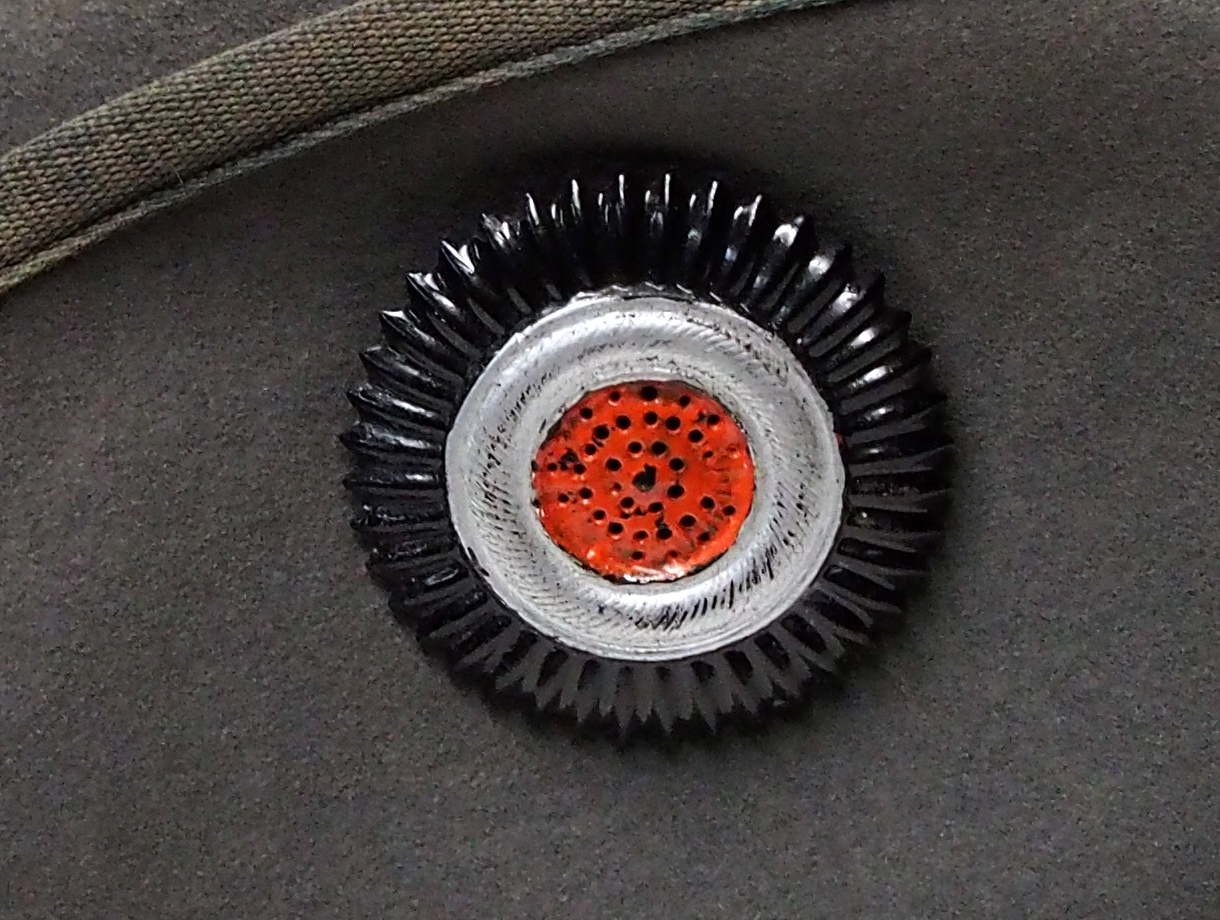
This version of the Imperial cockade — which may have been re-painted unfortunately at some point — featured a ventilation “grille” in the center to allow for air to flow into the hat (Collection of the author)
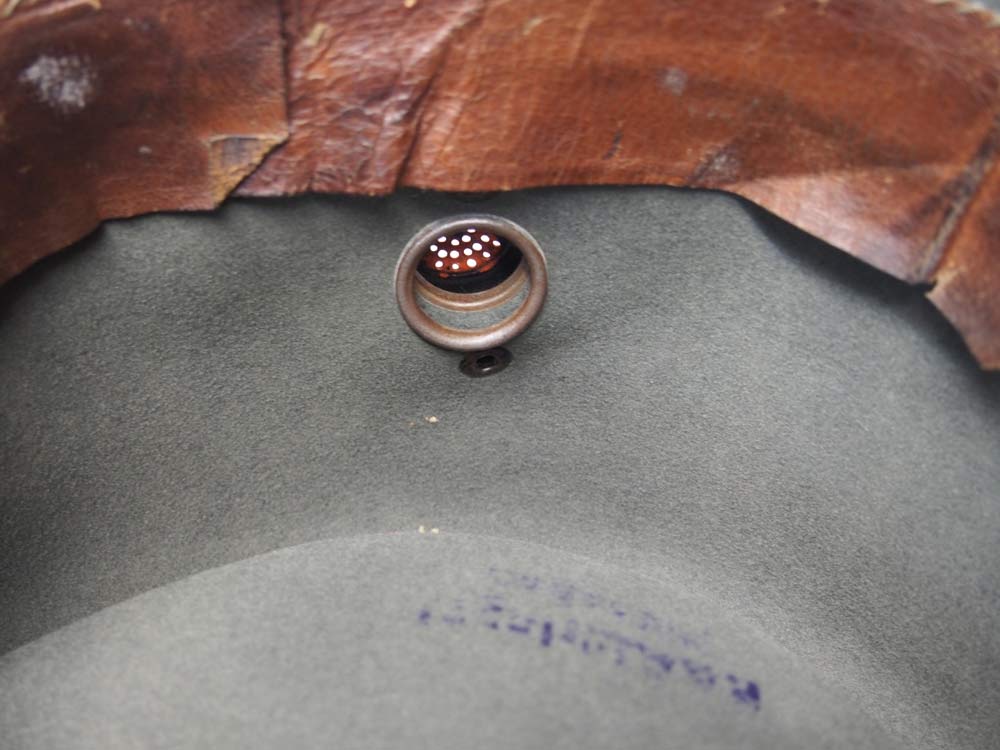
An side shot of the ventilation from the hat’s cockade (Collection of the author)
The German colonial empire was short lived, but these hats are a unique reminder of Germany’s attempt to find its place in the sun.

Another fantastic article, thanks for the great pictures